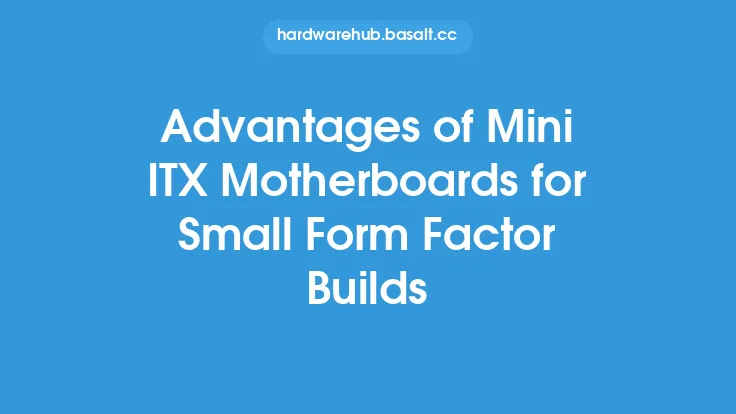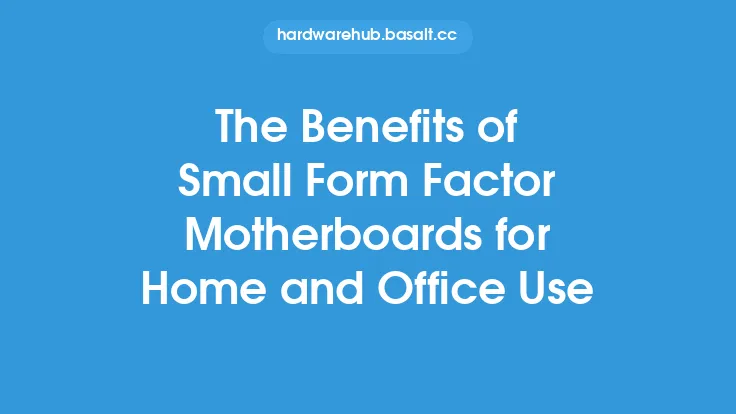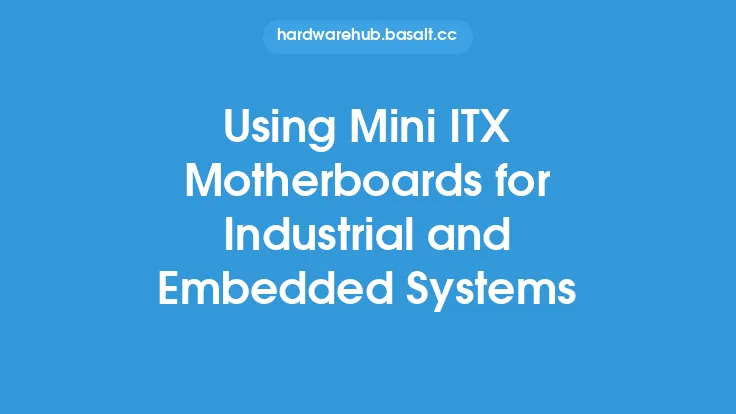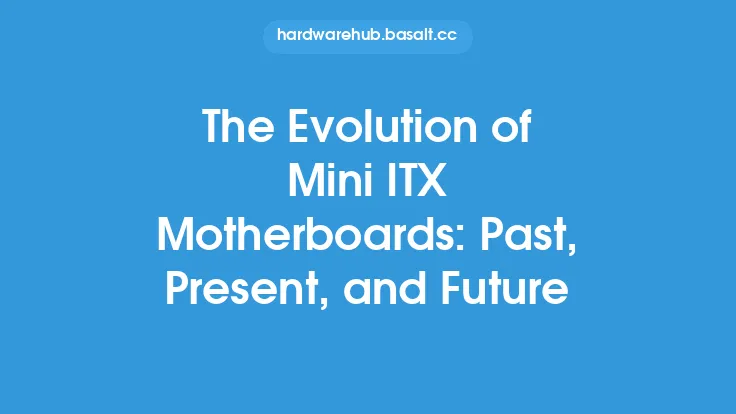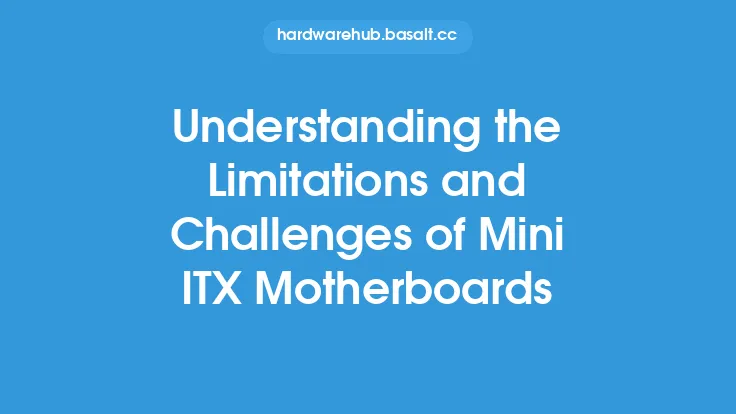When it comes to building small form factor systems, two popular options for motherboards are Mini ITX and Micro ATX. Both of these formats offer a range of benefits, including compact size, low power consumption, and high performance. However, they also have some key differences that can make one more suitable for a particular build than the other. In this article, we'll take a closer look at the comparison between Mini ITX and Micro ATX motherboards, exploring their features, advantages, and disadvantages.
Introduction to Mini ITX Motherboards
Mini ITX motherboards are the smallest of the two, measuring just 6.7 inches (17 cm) square. This compact size makes them ideal for building small form factor systems, such as home theater PCs, gaming consoles, and industrial control systems. Despite their small size, Mini ITX motherboards are capable of supporting a wide range of components, including CPUs, memory, storage devices, and graphics cards. They typically have a limited number of expansion slots, usually just one or two, which can limit their upgradability and flexibility. However, this also helps to keep costs down and makes them more energy-efficient.
Introduction to Micro ATX Motherboards
Micro ATX motherboards, on the other hand, are slightly larger, measuring 9.6 inches (24.4 cm) square. This larger size provides more room for expansion slots, typically three or four, which makes them more versatile and upgradable. Micro ATX motherboards are also capable of supporting a wider range of components, including more powerful CPUs and graphics cards. They are often used in small form factor systems where more expansion options are required, such as in gaming PCs or workstations. However, their larger size can make them more difficult to fit into compact cases, and they often require more power to operate.
Comparison of Features
When comparing Mini ITX and Micro ATX motherboards, there are several key features to consider. One of the main differences is the number of expansion slots, as mentioned earlier. Mini ITX motherboards typically have just one or two expansion slots, while Micro ATX motherboards have three or four. This can limit the upgradability and flexibility of Mini ITX systems, but also helps to keep costs down and reduce power consumption. Another key difference is the size and layout of the motherboard. Mini ITX motherboards are more compact and have a more efficient layout, which can make them easier to work with in small cases. Micro ATX motherboards, on the other hand, have a more traditional layout and are often easier to work with in larger cases.
Power Consumption and Heat Generation
Power consumption and heat generation are also important considerations when comparing Mini ITX and Micro ATX motherboards. Mini ITX motherboards are designed to be more energy-efficient and typically consume less power than Micro ATX motherboards. This is due to their smaller size and more efficient design, which requires less power to operate. Micro ATX motherboards, on the other hand, often require more power to operate, especially when supporting more powerful components. This can generate more heat, which can be a concern in small form factor systems where cooling can be limited. However, many Micro ATX motherboards are designed with advanced cooling features, such as heat sinks and fans, which can help to mitigate this issue.
Performance and Overclocking
In terms of performance, both Mini ITX and Micro ATX motherboards are capable of delivering high levels of performance, depending on the components used. Mini ITX motherboards are often used in systems where compact size and low power consumption are more important than raw performance. However, they can still support powerful CPUs and graphics cards, and are often used in gaming PCs and workstations. Micro ATX motherboards, on the other hand, are often used in systems where more expansion options are required, and can support more powerful components. They are also often used in overclocking systems, where their larger size and more advanced cooling features can help to support higher clock speeds.
Conclusion
In conclusion, the choice between Mini ITX and Micro ATX motherboards depends on the specific needs of the system. Mini ITX motherboards are ideal for building small form factor systems where compact size and low power consumption are more important than raw performance. They are often used in home theater PCs, gaming consoles, and industrial control systems. Micro ATX motherboards, on the other hand, are more versatile and upgradable, and are often used in gaming PCs, workstations, and overclocking systems. By considering the features, advantages, and disadvantages of each format, builders can choose the best motherboard for their specific needs and build a system that meets their requirements.
